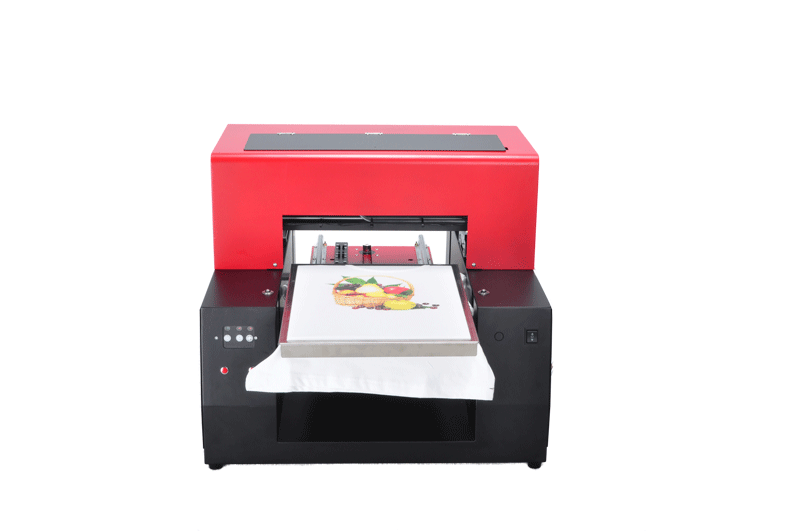The problems described below have one thing in common: problems that can be observed with the naked eye or with the help of a microscope.
In general, problems are divided into two categories: errors at the edges of the graphic and errors at the graphic area. The errors at the edges of graphics and texts refer to the inconsistence between the edges of the graphics and the originals, and the errors in the graphics and text areas refer to the problems of the surface of the graphics and texts. (Note: The problems that arise in screen printing are not limited to these two types. Registration alignment, adjustment of ink volume and post-printing have an impact on print quality.)
There are generally four characteristics that can be used to identify, compare, and classify graphic issues as follows:
position
Refers to the location of a problem in a continuous print, relative to the entire graphic. If the location display is "same", then the problem always appears in the same place. Other possible situations are "variousposition" (outside location) or out of print area, or near (inaccurate) the same location.
direction
Refers to the orientation of the problem relative to the printed variable. For example, when the angle between the image and the mesh line is 1° to 10° or 80° to 89°, the jagged edge phenomenon is most noticeable. The direction also refers to the scratches of the squeegee, the length of the squeegee, and the direction of the edges of the image.
size
The size of the image in question relative to the qualifying print. For example: smearing will make the image larger, and the loss of the edge will make the image smaller. When there is no regular change in the image in the print, you can fill in the table with "random."
frequency
The frequency of problems on fingerprints. Some problems have always existed, such as ghosting; some problems occur occasionally, such as the ink line; and some problems continue to appear on several prints, and then disappear, and then you can fill in the table with "both."
These four characteristics explain why solving a problem during printing is better than solving it later. Unfortunately, if the printer does not understand the differences between the defects, it is difficult to confirm the problem and solve it.
In addition to the above four features, each fault has one or more features that are easily identifiable.
in conclusion
1. The image sharpness problem can be divided into two parts: image edge defects and image area defects.
2. The image edge defect refers to the edge is not accurately and faithfully copied; the image area defect refers to the problem of the appearance of the printed product or ink coverage.
3. To clearly describe the problem, you must first know the recognized standard: location, direction, size, and frequency.
Heat transfer and silk screen Inkjet printing onto garments is no longer a good choice and came out of date with the digital printing technology development. Over the last few years the prints have become much more durable and the quality and wash-ability is now equal to and even better than screen printing.
From short runs or even one-off prints to large production runs,the kingmajet Jet has been proven by large and small companies choose over and over again.
We have been the leader in this technology and brought our years of digital printing experience to play when designing the Tshirt on-line
In fact, we have sold many direct to Garment Printer to the world wide and we were the pioneer company to introduce the pigment water-based white inkjet ink to the industry!
Clothes Printer feature and benefit:
1. cost-effectiveness ,no printing plates, silkscreens are used, avoiding the high set-up cost of plate-making, as is necessary for traditional printing methods like screen printing.
2. instant multicolored image output ,computerized and processing all colors at one time, while screen printing can print only simple designs in a maximum of three colors and involves a separate and time-consuming step for each color to be printed.
3. allowing for on-demand printing and even a modification of the image with each impression,ideally suited for personalized printing.
4. designed for both mass production and short run production, of the same individual cost.
5. aiming at high-end products with high speed and hi-definition, Max. resolution is 2880dpi*2880dpi.
6. Professional color management system achieves the same appearance of colors when converted from different color devices to corresponding media.
7. Easy to use, requiring no technical skill to use our printer,30 minutes video training is enough for a new hand to learn to use our machine as long as he or she knows how to use a image processing software like Photoshop to create an image file.

|
Name |
Clothes printer |
|
Print head |
DX5 |
|
Printer size |
33*43cm(33*60cm) |
|
Printing speed |
A4 photo/111s |
|
Printng resolution |
5760*1440dpi |
|
Nozzles |
90*6=540 |
|
Interface |
USB2.0 |
|
Net weight/Gross weight |
55Kg/60Kg |
|
Printer size |
750*630*510mm |
|
Height adjustment |
Automatic |
|
Working power |
110V/220V 50/60Hz 30-75W |
|
Operation system |
Windows 7/XP/2000/Vista etc |
|
Temperature |
5-35o |
Clothes Printer
Clothes Printer,Digital Clothes Printer,Printer Machine For Cloth,Mini Cloth Printing Machine
Shenzhen Refinecolor Technology Co., LTD. , https://www.rfcprinter.com
![<?echo $_SERVER['SERVER_NAME'];?>](/template/twentyseventeen/skin/images/header.jpg)